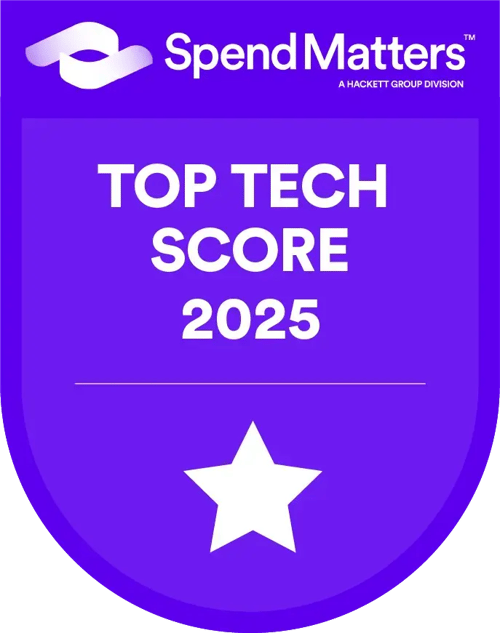Decarbonization has become a critical imperative for businesses worldwide.
While internal emissions reductions are essential, the scope of impact expands when considering the emissions embedded within a company's supply chain, known as Scope 3 emissions. Scope 3 is, on average, 11.4 times larger than direct emissions.
Businesses must collaborate with their suppliers to effectively address Scope 3 emissions. The Science Based Targets initiative (SBTi) provides a robust framework for setting emissions reduction targets.
In this blog, we'll dive into everything you need to know to engage your supply chain in decarbonization efforts, utilizing the SBTi framework as a guiding framework.
Understanding SBTi and the Focus on Scope 3
The Science Based Targets initiative (SBTi) is a collaboration between CDP, the United Nations Global Compact (UNGC), the World Resources Institute (WRI), and the World Wide Fund for Nature (WWF).
The SBTi is focused on accelerating the progress of companies across the world to halve emissions before 2030 and achieve net-zero emissions before 2050.
SBTi provides a clear and scientifically rigorous framework for setting emissions reduction targets that align with the goals of the Paris Agreement.
To comply with the SBTi Criteria, companies must set scope 3 targets—that is, supplier engagement targets and/or reduction targets that collectively cover at least 67% of total scope 3 emissions—if these emissions represent over 40% of their total scope 1, 2, and 3 emissions.
Supply chain emissions are recognized as the most crucial area for action and climate impact. In other words, your spend data is the key to decarbonization efforts.

Importance of Supplier Engagement
Supplier engagement targets are one of the 4 target-setting methods for companies to set scope 3 targets. They specify the share of a company’s emissions which will be covered by suppliers setting science-based emission reduction targets in the near-term.
“Deutsche Telekom AG commits to reach net-zero emissions across the value chain by 2040. Deutsche Telekom AG commits to reduce absolute scope 3 GHG emissions 47% by 2030 from a 2020 base year”.
Discover how Deutsche Telekom mastered emissions with data!
Suppliers often account for a substantial portion of a company's carbon footprint, particularly in industries with complex and extensive supply chains. By collaborating with suppliers to identify and implement emissions reduction opportunities, businesses can drive meaningful change throughout their value chains, enhance resilience, and strengthen sustainability efforts.
Selecting the Right Suppliers for the Right Targets
When setting emissions reduction targets for Scope 3 emissions, it's essential to prioritize suppliers with the greatest emissions impact. The SBTi framework offers guidance on selecting relevant categories and scopes for target-setting, ensuring that efforts are focused where they can make the most significant difference.
By tailoring targets based on supplier capabilities and contribution to overall emissions, companies can maximize the effectiveness of their decarbonization initiatives.
Learn how Sievo connects SBTi data so you can follow the climate actions of your supplier base
Securing Internal Buy-In
Internal stakeholder buy-in is critical for the success of supplier engagement initiatives. You want to go from Net Zero to Carbon Hero. By aligning decarbonization goals with broader corporate sustainability strategies and demonstrating the business case for supply chain decarbonization, companies can garner support from key decision-makers and departments.
The SBTi framework provides credibility and legitimacy to emissions reduction targets, helping to secure internal buy-in across the organization.
Implementing Targets
Once emissions reduction targets are established in alignment with the SBTi framework, it's crucial to integrate them into supplier contracts and agreements. Near-term scope 3 targets must cover 67% of total scope 3 emissions.
By incorporating targets into procurement processes and supplier relationships, companies can drive accountability and ensure that decarbonization efforts are prioritized throughout the supply chain. Providing support and resources to suppliers is also essential for facilitating target implementation and driving progress towards shared goals. 
Selecting Supplier Data Collection Solutions
Effective data collection and management are fundamental for tracking supplier emissions and monitoring progress toward emissions reduction targets. The SBTi framework emphasizes the importance of accurate and transparent data to inform target-setting and decision-making.
Companies can leverage digital platforms and tools to streamline data collection processes, enhance data accuracy, and facilitate collaboration with suppliers.
Tracking Supplier Performance
Effective data collection and management are fundamental for tracking supplier emissions and monitoring progress toward emissions reduction targets. The SBTi framework emphasizes the importance of accurate and transparent data to inform target-setting and decision-making.
Companies can leverage digital platforms and tools to streamline data collection processes, enhance data accuracy, and facilitate collaboration with suppliers.
Supplier Engagement
Developing key performance indicators (KPIs) aligned with the SBTi framework is essential for monitoring supplier performance and progress towards emissions reduction targets.
Regularly reviewing and analyzing supplier performance data enables companies to identify areas for improvement, provide feedback and guidance to suppliers, and drive continuous emissions reductions throughout the supply chain.
A simple first step is to benchmark your current performance using the Scope 3 benchmarking tool developed with Deloitte, which highlights the suppliers and categories that shape most of your emissions.
Supplier Incentives to Reach Targets
Incentivizing suppliers to achieve emissions reduction targets can accelerate progress and drive engagement. Companies can offer financial rewards, recognition, and capacity-building support to incentivize emissions reductions and foster a culture of sustainability within the supply chain.
Aligning incentives with supplier-specific objectives and motivations ensures that efforts are targeted and effective, while also promoting fairness and transparency in incentive structures.
Monitoring and Reporting Progress
Robust monitoring and reporting mechanisms are essential for tracking overall progress toward Scope 3 emissions reduction goals and demonstrating transparency to stakeholders.
The SBTi framework provides guidelines for reporting emissions data and progress toward targets, helping companies communicate their efforts and achievements effectively. By iteratively refining strategies based on performance data and feedback, companies can drive continuous improvement and create lasting positive impact.
Benchmarking your Scope 3 performance at this stage helps you understand your starting point before aligning with SBTi requirements.
Conclusion
With 75% of CO2 emissions lying in the supply chain, engaging the supply base in decarbonization efforts is essential for businesses committed to meaningful climate action.
By leveraging the SBTi framework and implementing effective supplier engagement strategies, companies can drive significant emissions reductions across their value chains, contributing to a more sustainable future.
Learn how Sievo helps you understand the exact portion of your procurement spend with suppliers committed to Science-Based Targets.
Sievo empowers you to take control of your Scope 3 emissions and drive real change with AI classification and personalized one-click actions. Carbon action starts with unlocking the power of your spend data to drive meaningful supplier-level carbon reduction initiatives.
Sievo enables you to tackle emissions hot spots with precise spend, quantity, and supplier-level calculations. It is supported by a classification coverage of 98% to the deepest granularity and the highest data accuracy guarantee of 94% on the market.
With accurate supply chain data, clear targets, collaborative partnerships, and ongoing monitoring, businesses can navigate the path to decarbonization.
Want to hear how to address the sustainability targets for your supply chain? Let’s discuss!


